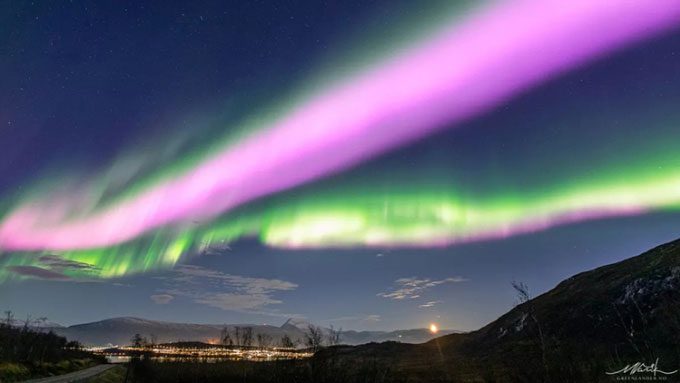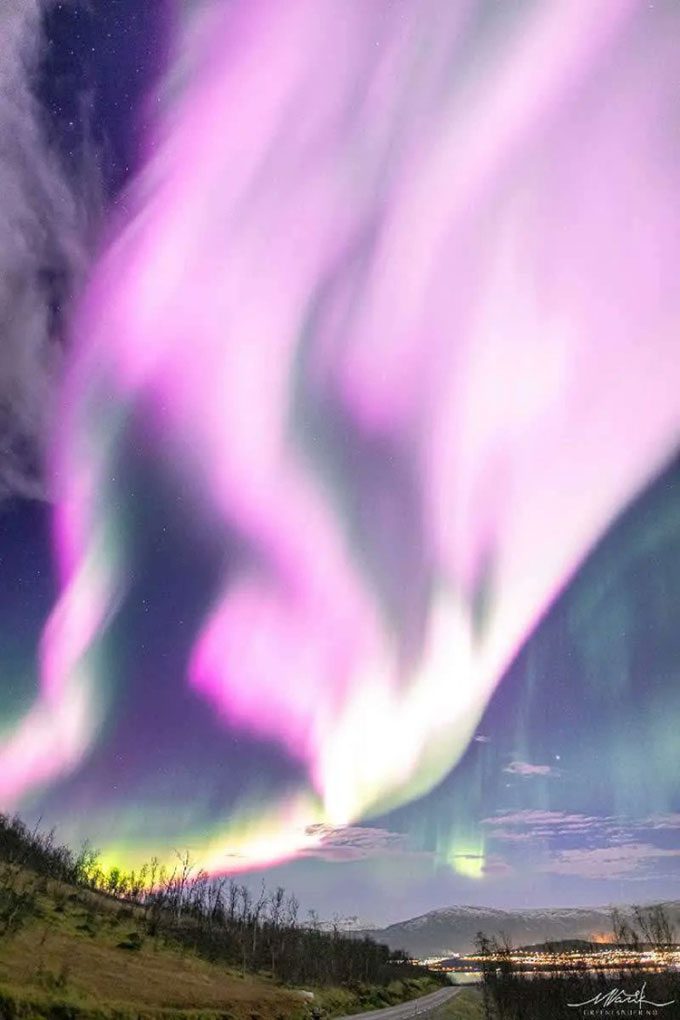Photographer Markus Varik captures stunning pink auroras in Norway as a solar storm breaks a hole in Earth’s magnetosphere.

Spectacular auroras in the sky of Norway. (Photo: Markus Varik)
Residents in the city of Tromsø, located in northern Norway, are no strangers to auroras as it is one of the best places to witness this phenomenon. However, the “light show” last week was particularly special. At certain moments, the entire sky was illuminated by bands of ethereal colors, including the rare pink light.
This breathtaking scene was captured by photographer Markus Varik, an aurora guide from the travel company Greenlander based near Tromsø, and shared with Live Science on November 7.
“This is the strongest pink aurora I have seen in over a decade,” Varik emphasized. “It appeared around 6 PM local time and lasted for two minutes.”
According to Forbes, this was also one of the strongest northern lights displays of the year, triggered by a G-1 solar storm that hit Earth on November 3. Although G-1 represents a weak intensity, the storm tore a hole in the planet’s magnetosphere, allowing high-energy particles to penetrate deeper into the atmosphere than usual, resulting in the auroras displaying unusual colors.

Solar storm facilitates the formation of rare pink auroras. (Photo: Markus Varik)
Auroras are formed when high-energy charged particles from the solar wind collide with the magnetosphere. The Earth’s magnetic field protects us from cosmic radiation, but this natural shield is weaker at the North and South Poles, allowing the solar wind to penetrate the atmosphere, typically at altitudes between 100 and 300 km above the Earth’s surface.
Most auroras appear green because oxygen atoms, which are abundant in the atmosphere, emit that color when excited. However, during the recent solar storm, the crack in Earth’s magnetosphere allowed the solar wind to penetrate below 100 km, where nitrogen is the most abundant gas, according to Space Weather. As a result, the auroras emitted neon pink light when charged particles collided with nitrogen atoms.
The hole in the magnetosphere also produced strong green auroras throughout the night before closing after about six hours, Varik said. During this time, a strange blue light band also appeared in Sweden, where it hovered in the sky for about 30 minutes.





















































